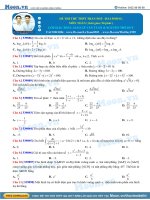Astm b 930 03 (2017)
Bạn đang xem bản rút gọn của tài liệu. Xem và tải ngay bản đầy đủ của tài liệu tại đây (70.61 KB, 2 trang )
This international standard was developed in accordance with internationally recognized principles on standardization established in the Decision on Principles for the
Development of International Standards, Guides and Recommendations issued by the World Trade Organization Technical Barriers to Trade (TBT) Committee.
Designation: B930 − 03 (Reapproved 2017)
Standard Test Method for
Rating Grain Size and Frequency of Abnormally Large
Grains in Cemented Tungsten Carbides (Hardmetals)1
This standard is issued under the fixed designation B930; the number immediately following the designation indicates the year of
original adoption or, in the case of revision, the year of last revision. A number in parentheses indicates the year of last reapproval. A
superscript epsilon (´) indicates an editorial change since the last revision or reapproval.
3.2.2 L-Rating—the size, in µm, of the largest grain observed in a fully-etched specimen.
1. Scope
1.1 This test method describes a procedure for measuring
abnormally large grains and the frequency of those grains in
cemented tungsten carbides (hardmetals).
1.2 This standard does not purport to address all of the
safety concerns, if any, associated with its use. It is the
responsibility of the user of this standard to establish appropriate safety and health practices and determine the applicability of regulatory limitations prior to use.
1.3 This international standard was developed in accordance with internationally recognized principles on standardization established in the Decision on Principles for the
Development of International Standards, Guides and Recommendations issued by the World Trade Organization Technical
Barriers to Trade (TBT) Committee.
4. Summary of Test Method
4.1 A polished and fully etched specimen/specimens having
a minimum observable area of 0.5 cm2 is examined using a
metallograph. Abnormally large grains, compared to the finergrained background material, are identified. These grains are
categorized as: ( 1) The number of grains larger than a
specified size, or ( 2) The largest grain observed, or both.
5. Significance and Use
5.1 The microstructure and grain growth of cemented tungsten carbides affect the material’s mechanical and physical
properties. The grain size and distribution will affect the
material’s wear resistance and fracture toughness. Abnormally
large grains as compared to the background may introduce an
area of weakness in a sintered part.
2. Referenced Documents
2.1 ASTM Standards:2
B243 Terminology of Powder Metallurgy
B406 Test Method for Transverse Rupture Strength of Cemented Carbides
B657 Guide for Metallographic Identification of Microstructure in Cemented Carbides
B665 Guide for Metallographic Sample Preparation of Cemented Tungsten Carbides
5.2 This test method may be used in acceptance testing of
cemented tungsten carbide materials or the tungsten carbide
powder used in their manufacture. The specified grain size used
for the E-Rating is to be agreed upon between purchaser and
supplier.
6. Apparatus
6.1 Metallographic Microscope, capable of magnifications
of up to 1500×.
3. Terminology
3.1 Definitions—Definitions of powder metallurgy terms
can be found in Terminology B243.
6.2 Ordinary metallurgical laboratory equipment.
6.3 Equipment for specimen preparation as outlined in
Guide B665.
3.2 Definitions of Terms Specific to This Standard:
3.2.1 E-Rating—the number/cm2 of grains larger than a
specified size in a fully-etched specimen.
7. Test Specimens
7.1 Specimen Size—The recommended specimen shall be
the standard transverse rupture specimen as specified in Test
Method B406; that is, ground to the following dimensions:
5.00 6 0.25 mm (0.200 6 0.010 in) thick by 6.25 6 0.25 mm
(0.250 6 0.010 in) wide by 19.0 mm (0.750 6 in) long.
Alternatively, the specimen shall be a size to provide a
minimum 0.5 cm2 surface area of examination, or it may
consist of several samples that provide this minimum area.
1
This test method is under the jurisdiction of ASTM Committee B09 on Metal
Powders and Metal Powder Products and is the direct responsibility of Subcommittee B09.06 on Cemented Carbides.
Current edition approved April 1, 2017. Published April 2017. Originally
approved in 2003. Last previous edition approved in 2012 as B930 – 03(2012). DOI:
10.1520/B0930-03R17.
2
For referenced ASTM standards, visit the ASTM website, www.astm.org, or
contact ASTM Customer Service at For Annual Book of ASTM
Standards volume information, refer to the standard’s Document Summary page on
the ASTM website.
7.2 Specimen Preparation:
Copyright © ASTM International, 100 Barr Harbor Drive, PO Box C700, West Conshohocken, PA 19428-2959. United States
1
B930 − 03 (2017)
9. Report
9.1 The report shall include the following:
9.1.1 Reference to this test method,
9.1.2 Complete identification of the test specimen,
9.1.3 Details of any occurrence that may have affected the
results,
9.1.4 The total area examined, in cm2,
9.1.5 The E-Rating as grains/cm2, rounded to the nearest
whole integer, and
9.1.6 The L-Rating in µm, rounded to the nearest whole
integer.
7.2.1 Polish the specimen/specimens according to the procedure described in Guide B665, or other suitable metallographic polishing procedure. If using the recommended
specimen, polish the 6.25 by 19.0 mm side.
7.2.2 Etch the specimen according to the procedure described in Test Method B657, or other suitable etching procedure that will reveal the tungsten carbide grain structure.
8. Procedure
8.1 Examine a fully-etched specimen at a minimum of 200×
magnification.
8.1.1 For E-rating—Count the number of grains larger than
the specified size observed in the full cross-section of the
polished and etched specimen/specimens. Divide this number
by the total area examined (1.2 cm2 for the recommended
transverse rupture specimen) to obtain a number of grains/cm2.
8.1.2 For L-Rating—Measure the largest dimension of the
largest grain observed in the polished and etched specimen/
specimens.
10. Precision and Bias
10.1 No statement regarding precision and bias of this test
method can be made at this time. Plans for an interlaboratory
study are being formulated.
11. Keywords
11.1 abnormally large grains; cemented carbides; cemented
tungsten carbide; E-rating; hardmetals; L-rating; microstructure
ASTM International takes no position respecting the validity of any patent rights asserted in connection with any item mentioned
in this standard. Users of this standard are expressly advised that determination of the validity of any such patent rights, and the risk
of infringement of such rights, are entirely their own responsibility.
This standard is subject to revision at any time by the responsible technical committee and must be reviewed every five years and
if not revised, either reapproved or withdrawn. Your comments are invited either for revision of this standard or for additional standards
and should be addressed to ASTM International Headquarters. Your comments will receive careful consideration at a meeting of the
responsible technical committee, which you may attend. If you feel that your comments have not received a fair hearing you should
make your views known to the ASTM Committee on Standards, at the address shown below.
This standard is copyrighted by ASTM International, 100 Barr Harbor Drive, PO Box C700, West Conshohocken, PA 19428-2959,
United States. Individual reprints (single or multiple copies) of this standard may be obtained by contacting ASTM at the above
address or at 610-832-9585 (phone), 610-832-9555 (fax), or (e-mail); or through the ASTM website
(www.astm.org). Permission rights to photocopy the standard may also be secured from the Copyright Clearance Center, 222
Rosewood Drive, Danvers, MA 01923, Tel: (978) 646-2600; />
2
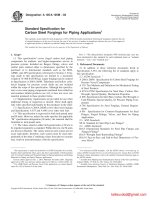
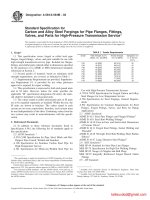
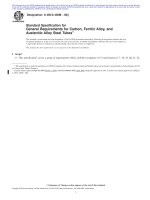
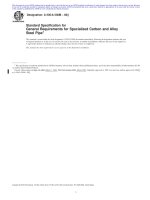
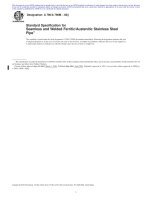
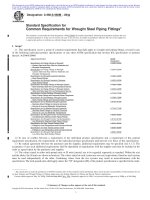
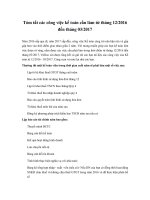

![[Soạn mới] Chương trình khung Mô đun CorelDraw 60 tiết - mới biên soạn theo thông tư 03/2017 về ban hành và thẩm định chương trình của Tổng cục dạy nghề](https://media.store123doc.com/images/document/2017_05/15/medium_adz1494808387.jpg)
